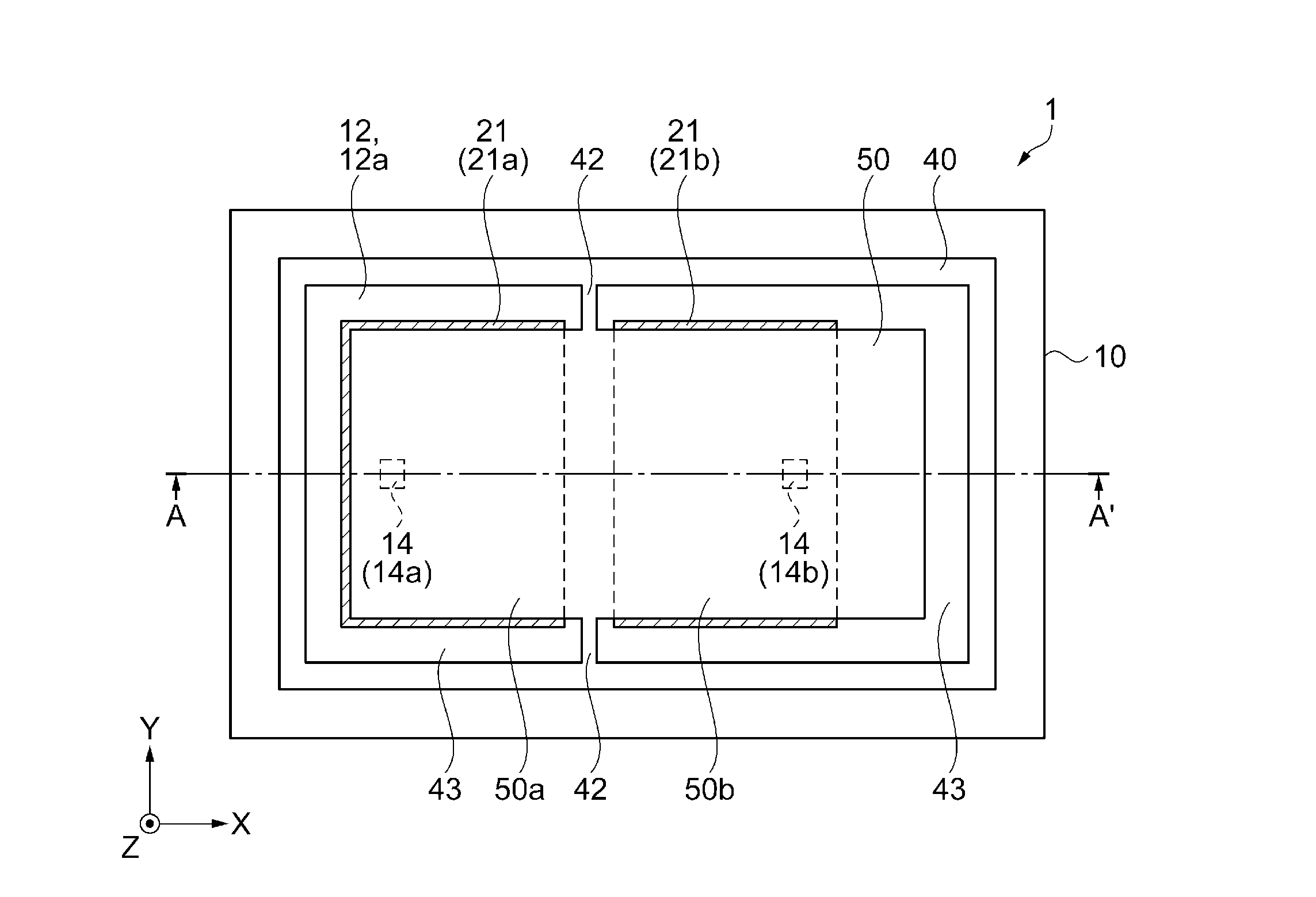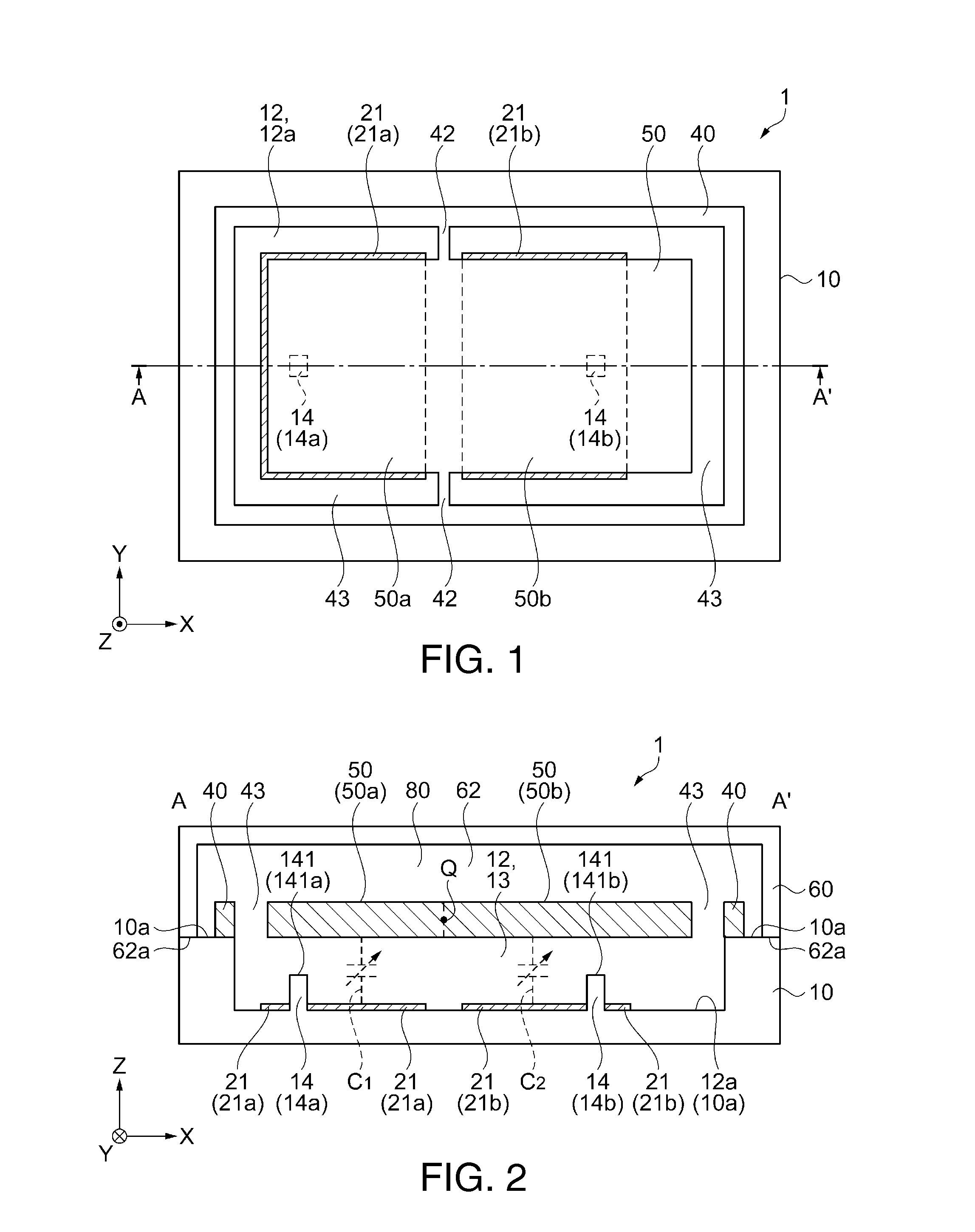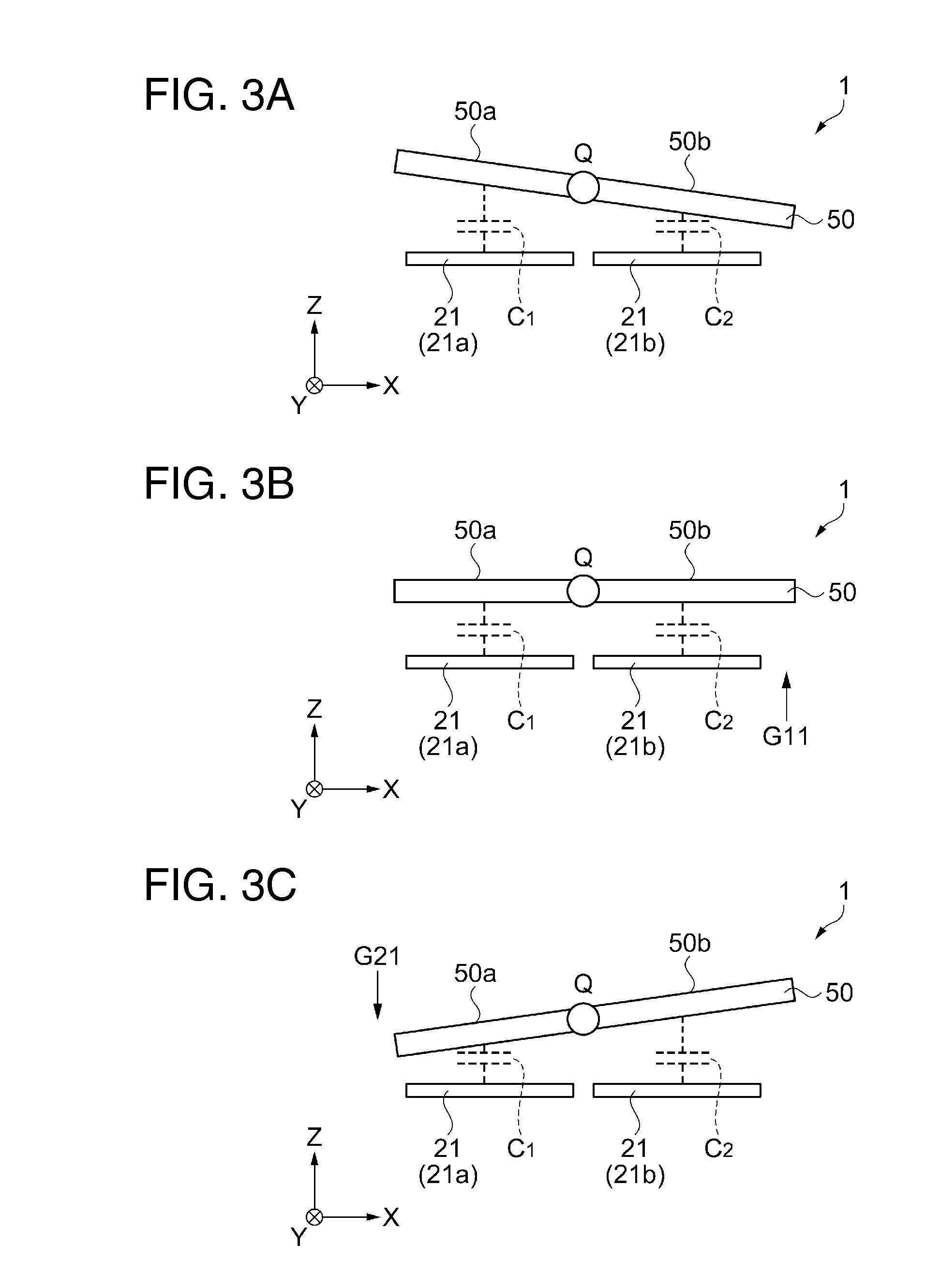Sensor element, electronic apparatus and moving object
a technology of electronic equipment and moving objects, applied in the direction of flexible microstructure devices, speed/acceleration/shock measurement, instruments, etc., can solve the problems of movable body coming into contact with the protruding section, movable electrode pulling toward the fixed electrode, etc., to achieve the effect of enhancing reliability
- Summary
- Abstract
- Description
- Claims
- Application Information
AI Technical Summary
Benefits of technology
Problems solved by technology
Method used
Image
Examples
first embodiment
[0059]A sensor element according to a first embodiment will be described with reference to FIG. 1 to FIGS. 3A, 3B and 3C.
[0060]FIG. 1 is a plan view schematically illustrating a sensor element according to the first embodiment. FIG. 2 is a cross-sectional view schematically illustrating the sensor element taken along line A-A′ in FIG. 1. FIGS. 3A to 3C are diagrams schematically illustrating an operation of the sensor element according to the first embodiment.
[0061]For ease of description, a cover is not shown in FIG. 1. Further, only a movable body and a detection electrode section are shown in FIGS. 3A to 3C. In FIG. 1 to FIGS. 3A, 3B and 3C, an X axis, a Y axis and a Z axis are shown as three axes that are orthogonal to each other. The Z axis is an axis indicating a thickness direction where the cover overlaps a substrate.
[0062]Structure of sensor element 1
[0063]The sensor element 1 of the present embodiment may be used as an inertial sensor, for example. Specifically, the sensor...
second embodiment
[0130]A sensor element according to a second embodiment will be described with reference to FIG. 4.
[0131]FIG. 4 is a cross-sectional view schematically illustrating the sensor element according to the second embodiment. FIG. 4 is a diagram schematically illustrating a cross section of the sensor element, taken along line A-A′ in FIG. 1.
[0132]In FIG. 4, the X axis, the Y axis and the Z axis are shown as three axes that are orthogonal to each other. The Z axis is an axis indicating a thickness direction where a cover overlaps a substrate.
[0133]A sensor element 1a according to the second embodiment is different from the sensor element 1 described in the first embodiment in that a dummy electrode section 22 is provided on the first bottom surface 12a of the first recessed section 12 provided in the substrate 10. Since the other configurations and the like in the sensor element 1a are approximately the same as in the sensor element 1, the same reference numerals are given to the same com...
third embodiment
[0145]A sensor element according to a third embodiment will be described with reference to FIG. 5.
[0146]FIG. 5 is a cross-sectional view schematically illustrating the sensor element according to the third embodiment. FIG. 5 is a diagram schematically illustrating a cross section of the sensor element, taken along line A-A′ in FIG. 1.
[0147]In FIG. 5, the X axis, the Y axis and the Z axis are shown as three axes that are orthogonal to each other. The Z axis is an axis indicating a thickness direction where a cover overlaps a substrate.
[0148]A sensor element 1b according to the third embodiment is different from the sensor element 1a described in the second embodiment in that groove sections 16 are provided in the first bottom surface 12a of the first recessed section 12 provided in the substrate 10. Since the other configurations in the sensor element 1b and the like are approximately the same as in the sensor elements 1 and 1a, the same reference numerals are given to the same compo...
PUM
 Login to View More
Login to View More Abstract
Description
Claims
Application Information
 Login to View More
Login to View More - R&D
- Intellectual Property
- Life Sciences
- Materials
- Tech Scout
- Unparalleled Data Quality
- Higher Quality Content
- 60% Fewer Hallucinations
Browse by: Latest US Patents, China's latest patents, Technical Efficacy Thesaurus, Application Domain, Technology Topic, Popular Technical Reports.
© 2025 PatSnap. All rights reserved.Legal|Privacy policy|Modern Slavery Act Transparency Statement|Sitemap|About US| Contact US: help@patsnap.com



